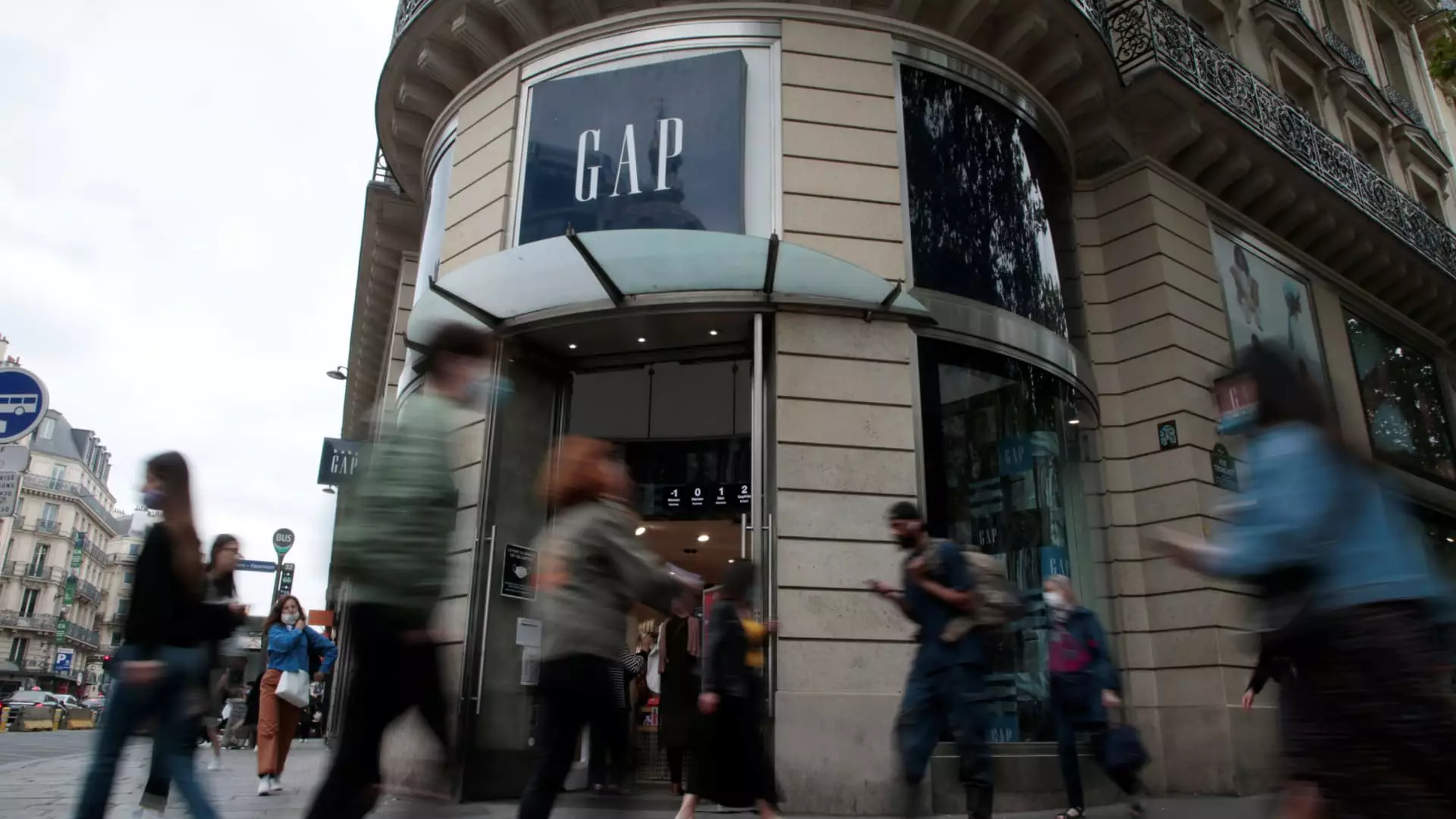The recent announcement from Gap Inc. regarding the financial implications of new tariffs has left shareholders reeling and many industry analysts stirring with concern. According to the company, the new 30% tariff on imports from China and a 10% import levy from other global suppliers could cost between $250 million to $300 million if left unchecked. Yet, in an attempt to calm the waters, Gap aims to mitigate these potential losses to a “mere” $100 million to $150 million through various strategies. The implications stretch far beyond numbers; they signify a fundamental challenge that not just Gap, but many legacy retailers will need to face amid a changing global trade landscape.
This situation begs the question: can companies like Gap still thrive when the very foundation of their supply chain is threatened? Gap’s CEO, Richard Dickson, expresses optimism, stating that they believe strong brands can succeed in any climate. However, while this sentiment may resonate during a conference call, it lacks substance when grappling with the practical aspects of retail operations. Gap has stated its commitment to diversifying its supply chains and reducing its dependence on China, but consumers may not remain patient during this tumultuous transition.
Financial Performance Amid Headwinds
In the context of difficult trading conditions, Gap delivered first-quarter results that surpassed Wall Street expectations: earnings per share of 51 cents versus an anticipated 45 cents. Revenue of $3.46 billion slightly edged out predictions, showcasing that the company still possesses some resilience in executing its strategies. But one must wonder how genuine this success is if the company is counting gains from yesterday while potentially building the shackles for tomorrow.
It’s enlightening, albeit slightly unsettling, to see that despite showing modest growth, the gross margin expectations were downgraded. Forecasts suggest a decline in profitability, compounded by the looming tariff threat along with factors unrelated to trade issues. Moreover, other brands within the Gap portfolio such as Banana Republic and Athleta continue to experience downward sales trends, raising concerns that brand loyalty may be dwindling.
The unexpected elevation in net income may provide brief solace, but investors need to keep a keen eye on the trajectory of these results. The detraction from significant tariff losses could obscure systemic issues within various Gap brands that need to be addressed immediately. A scramble for sustaining profits, rather than a commitment to genuine brand evolution, can lead to a façade of success.
The Complexity of Global Sourcing
Interestingly, Gap’s historical reliance on China has diminished substantially, decreasing from 10% of its sourcing to an expected 3% by the end of the year. This reduction reflects both a strategic pivot and a reaction to deteriorating trading relationships. Yet, it raises significant questions about the company’s supply chain management—Has it genuinely adapted, or is it merely responding to pressures?
When Gap contemplates increasing its cotton purchases from the U.S., one can’t ignore the broad impact that domestic sourcing may have on overall production costs. As U.S. cotton prices rise, the company’s assumption that these changes won’t translate to increased prices for consumers may prove overly optimistic. When the economic mantle of inflation and increases in operational costs is considered, one must question whether the consumers will indeed remain insulated from these impending price hikes.
Furthermore, the reliance on Asian manufacturing partners like Vietnam could backfire if reciprocal tariffs come into play. As the trade war intensifies, it becomes increasingly apparent that an intricate balancing act is necessary for Gap to preserve profitability while mitigating risks. However, the excessive focus on short-term mitigation tactics may undermine the brand’s credibility long term.
Brand Performance: Resilience or Stagnation?
The performance of individual Gap brands reveals a mosaic of success interspersed with stagnation. Old Navy stands tall with a 3% growth in sales, demonstrating that when a brand connects well with today’s consumers, it reaps the rewards. However, this growth cannot mask the struggles faced by Banana Republic and Athleta, brands that have clearly faltered in aligning with consumer expectations.
Athleta’s challenges particularly resonate, as a brand once celebrated for its innovative designs and strong messaging falls prey to a market that rewards authenticity and relevance. If Dickson believes that the path to recovery is a straightforward one, he may be setting himself and the brand up for a harsh reality check. The health of any retailer hinges on a robust product offering that resonates with existing and potential customers. Without significant revisions in product development and marketing strategies, brands like Athleta may only drift further into the periphery of the consumer’s mind.
Ultimately, while Gap Inc.’s impressive ability to post earnings amid crippling tariff threats deserves some commendation, the events unfolding are a stark reminder of the precarious balance between resilience and complacency. The coming months will reveal whether Gap’s optimistic affirmations can withstand the harsh realities that tariffs and supply chain complexities present, or if they will succumb to the legacy challenges that beset so many retailers today.

